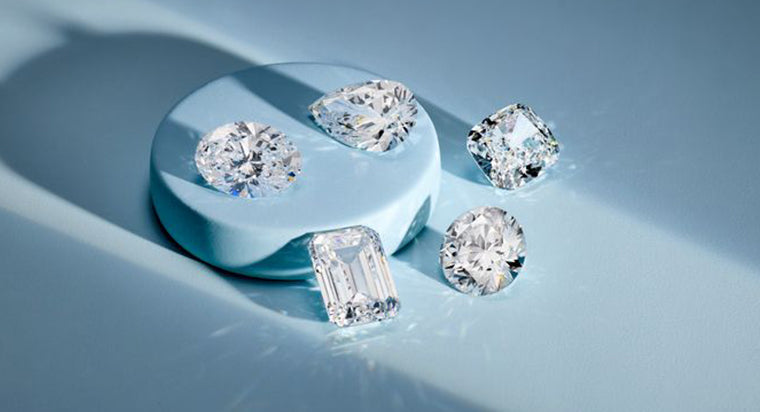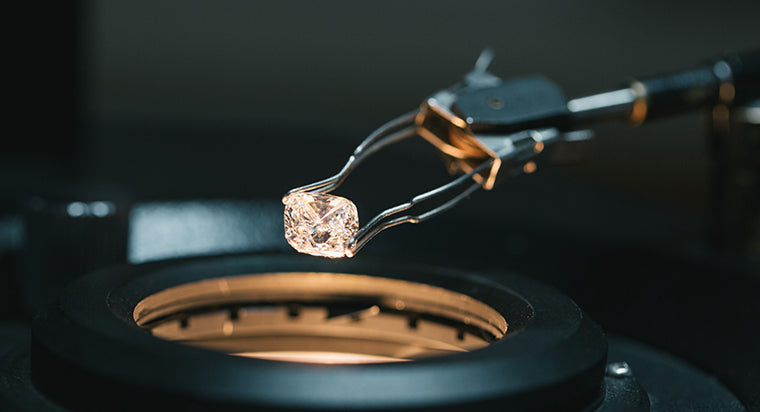What is an EGL Diamond Certification?

When investing in a purchase as significant and expensive as a diamond, a diamond grading report, or diamond certificate, is an important measure to ensure peace of mind while safeguarding against treated and lab diamonds. Although diamond certifications provide a third-party validation of your jeweler's diamonds, not all certifications are the same.
TABLE OF CONTENTS
Major U.S. Diamond Certifications
U.S. Diamond certificates typically come from one of three laboratories: the Gemological Institute of America (GIA), the European Gemological Laboratory - USA (EGL or EGL USA), or the American Gem Society (AGS).
Gemological Institute of America (GIA)
The GIA is often regarded as the world's leading gemological laboratory and the industry's most trusted and often used laboratory. But if your jeweler only offers EGL diamond certifications, you may be asking, "Is EGL a good diamond certificate?"
European Gemological Laboratory (EGL)
The EGL is a European founded grading agency with a strong global presence, particularly outside of the United States. Because the EGL's locations are all separately run, each has a different level of certification stringency. For example, EGL Los Angeles and New York are commonly known to have the best reputations while EGL Europe and Israel are generally known to be extremely lenient with their certifications.
Differences Between Diamond Certifications
The EGL is known for pioneering diamond grading techniques for stones weighing less than a carat, introducing the controversial SI3 diamond clarity rating, and having less stringent grading standards than the GIA. Meaning that, compared to the GIA, the EGL international diamond certification tends to report one color grade, and possibly one clarity grade, higher for the same diamond. And because the different diamond certifications are not equal in value, an EGL diamond should always be priced lower than a GIA diamond of the same certification.
Diamond certifications vary between institutions because of a difference in professional opinion, grading systems, and nomenclature.
Diamond Color Grades
It is commonly thought that color grade in a diamond is measured by the amount of yellow present in a stone. While this is true for most diamonds, there are many diamonds with other core colors such as brown, blue, green, gray, and pink. While the GIA typically downgrades diamonds by one or more color grade for the presence of color, the AGS and EGL often consider the absence of yellow a positive element and provide higher color grades for the best examples of these diamonds. As a result, the same diamond may receive different grades from the GIA, AGS, and EGL.
Diamond Clarity Grades
Diamond clarity is based on the quantity, size and position of inclusions under 10x magnification. The standard GIA clarity grading scale contains six main grades (from highest to lowest): FL, IF, VVS, VS, SI and I. FL (Flawless), diamonds don’t have flaws visible under 10x magnification. IF (Internally Flawless) diamonds have only insignificant surface blemishes. Then comes VVS (Very Very Slightly Included) and VS (Very Slightly Included) diamonds. Finally, there are SI (Slightly Included) and I (Included) diamonds, with the term “inclusion” referring to any diamond flaws.
The EGL is arguably notorious for their grading system which includes their unique "SI3" clarity grading, a subdivision of the SI clarity range. The EGL’s new SI subdivision caused concern because it added a new clarity grade that departed from the widely accepted GIA clarity scale which divides the SI grade into SI1 and SI2, with the next lowest grading after SI2 being the I1 subdivision of the Included range.
This new subdivision sparked controversy in the diamond industry because unassuming customers may be purchasing an EGL SI3 diamond without realizing that it may be equivalent to a GIA I diamond instead of a SI diamond. This one grade difference is significant because SI diamonds may or may not have inclusions visible to the naked eye while I diamonds will usually have flaws that are easily visible, causing a significant price drop between the two categories.
Popularity of Different Certifications
Unlike the GIA or the AGS, the EGL is a for-profit organization. They are popular among diamond merchants because they offer quick certification as well as pre-certification (pre-cert) options which allow diamond merchants to decide whether they wish to pay for a certificate after viewing the diamond grading results.
In order of popularity, the third laboratory, the AGS, falls between the GIA and the EGL. Although the AGS grading system uses a completely different numerical grading system on a scale from 0-10 (with 0 as the best), the AGS laboratory, much like the GIA, is similarly known for their ethical standards and consistent grading system.
When purchasing a diamond, it's important to be aware of the distinct differences between the three diamond grading laboratories and their certificates. Take the time to learn the unique facets of the EGL grading system and certification before purchasing an EGL diamond.









